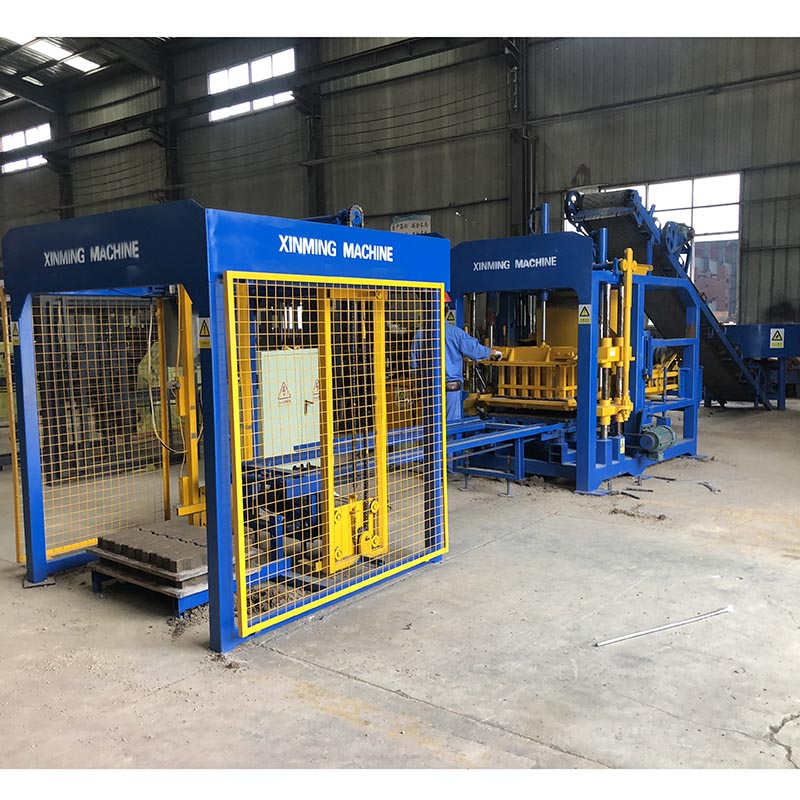
Image source: Aiwei block machine
Introduction
Tanzania, a country renowned for its rich cultural heritage and traditions, is also at the crossroads of technological advancement. In this era of progress, modern brick making machines are not only shaping the construction landscape but also influencing traditional practices. This article explores the impact of modern brick making machines on traditional brick production practices in Tanzania, examining how this technology transfer is reshaping craftsmanship, preserving culture, and driving sustainable development.
1. The Intersection of Tradition and Innovation
Tanzania’s cultural diversity and heritage are deeply intertwined with traditional practices.
- Craftsmanship: Handcrafted bricks have been integral to Tanzania’s architectural heritage.
- Technological Shift: Modern brick making machines challenge traditional methods.
2. Mechanization: A Paradigm Shift in Brick Production
Modern brick making machines represent a technological leap from traditional practices.
- Efficiency and Speed: Mechanization accelerates brick production compared to manual labor.
- Consistency: Uniform brick quality ensures structural integrity and durability.
3. Preserving Cultural Identity Through Innovation
Modern brick making machines offer a platform for merging tradition with innovation.
- Design Flexibility: Mechanized machines can replicate traditional brick patterns and textures.
- Cultural Continuity: Contemporary buildings incorporate traditional aesthetics.
4. Skill Transition: From Hand-Crafted to Mechanized Production
The adoption of modern brick making machines necessitates a shift in skill sets.
- Training Programs: Communities adapt skills to operate, maintain, and repair machines.
- Youth Engagement: Young generations learn both traditional and modern techniques.
5. Economic Empowerment and Sustainable Growth
Modern brick making machines contribute to local economic growth and sustainable development.
- Job Creation: Mechanized brick production generates employment opportunities.
- Entrepreneurship: Modern technology empowers individuals to start brick-making businesses.
6. Challenges and Opportunities for Craftsmanship
While modernization brings benefits, it also raises challenges for traditional craftsmanship.
- Skills Erosion: Mechanization might lead to a decline in traditional craftsmanship skills.
- Adaptive Opportunities: Mechanized brick production creates opportunities for skill enhancement.
7. Technological Equity: Bridging Urban-Rural Divides
Technology transfer promotes equity by bridging gaps between urban and rural areas.
- Rural Development: Mechanized brick production can stimulate local economies in rural regions.
- Urban Infrastructure: Technology enhances urban construction, improving living conditions.
8. Community Engagement and Ownership
Modern brick making machines involve communities in decision-making and progress.
- Local Participation: Communities are involved in setting up and running brick-making businesses.
- Ownership and Pride: Communities take pride in contributing to their own development.
9. Collaborative Partnerships for Sustainable Transition
Collaborations between government, NGOs, and the private sector maximize the positive impact.
- Guided Transition: Partnerships ensure a balanced transition from traditional to mechanized practices.
- Training Initiatives: Collaborations offer training programs for skill enhancement.
10. A Holistic Approach: Integrating Tradition and Technology
Integrating modern brick making machines into traditional contexts requires sensitivity.
- Cultural Sensitivity: Modernization respects the importance of cultural heritage.
- Environmental Considerations: Mechanized brick production aligns with sustainable practices.
11. Future Prospects: Striking a Harmonious Balance
The future of brick making in Tanzania lies in striking a balance between tradition and innovation.
- Skill Revival: Efforts to preserve traditional skills must be aligned with modern needs.
- Cultural Adaptation: Mechanized brick designs continue to reflect Tanzania’s cultural diversity.
Conclusion: Paving the Path Forward
The impact of modern brick making machines on traditional practices in Tanzania is a journey of innovation, preservation, and empowerment. These machines are more than just tools; they embody the fusion of tradition and technology, respecting the past while embracing the future. As Tanzania navigates this transition, the story of brick making machines becomes a symbol of resilience, adaptability, and progress. By harmonizing age-old practices with modernity, Tanzania paves a path toward a sustainable and culturally rich future, where tradition and innovation coexist in harmony, guiding the nation toward continued growth and prosperity.
